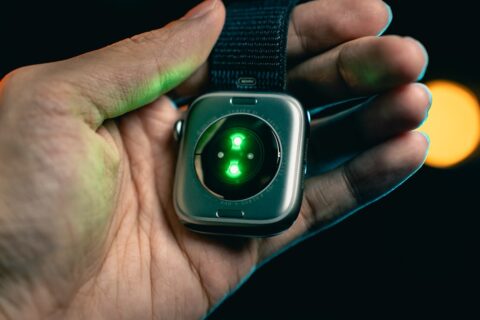The Lifesaving Impact of Timely Medical Care in Emergencies
Understanding the Critical Nature of Timely Medical Care in Emergencies
Timely medical care is crucial for minimizing mortality and disability rates, especially in life-threatening situations such as injuries and acute conditions. In fact, over half of the deaths in low- and middle-income countries could potentially be prevented with effective emergency care. One critical concept in trauma care is the “golden hour,” which underscores the importance of providing immediate treatment. Receiving care during this period significantly boosts survival rates, as the initial moments after a trauma are vital for effective intervention. Unfortunately, during the COVID-19 pandemic, about 12% of U.S. Adults reported avoiding urgent or emergency care due to concerns about the virus, risking worsened health outcomes.
Access to timely medical care is not only essential for physical health but also for mental well-being. Delays in receiving care can heighten anxiety and stress, particularly when dealing with serious health issues. For instance, someone experiencing severe chest pain may face increased psychological distress if medical attention is postponed, potentially complicating their condition further. Ensuring prompt treatment can alleviate such stress, providing both physical relief and peace of mind.

The Role of Emergency Medical Services (EMS)
Emergency Medical Services (EMS) play a pivotal role in the healthcare system by offering rapid assessment, timely interventions, and transportation to medical facilities. Effective EMS can notably reduce mortality rates from conditions like strokes, heart attacks, and severe injuries by delivering critical care promptly. EMS is often the first point of contact for patients experiencing life-threatening conditions, providing essential prehospital care that can stabilize patients before they reach the emergency room. For instance, trained emergency responders are equipped to administer life-saving treatments such as CPR and defibrillation within minutes of an emergency.
Moreover, the integration of technology in EMS, such as telemedicine, further enhances timely care by facilitating consultations during emergencies. This technological advancement allows EMS personnel to receive guidance from specialists remotely, ensuring that patients receive the best possible care even before reaching the hospital. Such innovations are crucial in expanding the capabilities of EMS and improving patient outcomes.
Common Life-Threatening Situations Requiring Immediate Care
Certain health emergencies demand urgent medical attention to prevent severe consequences. These include heart attacks, strokes, severe asthma attacks, and traumatic injuries, all of which require immediate intervention to improve patient outcomes. For example, a person experiencing a stroke needs to receive treatment as quickly as possible to reduce the risk of long-term disability. Additionally, pregnancy complications and severe infections are conditions that necessitate prompt medical care. Delays in addressing these issues can lead to deteriorating health and increased mortality rates.
Globally, injuries accounted for 4.4 million deaths in 2019, representing 8% of total deaths, which underscores the urgency of timely care. Other common life-threatening situations include severe allergic reactions (anaphylaxis) and drug overdoses, both of which require rapid intervention to prevent fatal outcomes. Quick responses to these emergencies can be the difference between life and death, highlighting the importance of being prepared for such situations.
Impact of Delays in Medical Care
Delays in receiving emergency medical care can exacerbate health issues, leading to increased morbidity and mortality. Timely intervention has been shown to significantly improve patient outcomes, reducing the likelihood of long-term health complications. For example, studies indicate that patients who receive treatment within the first hour of a heart attack have a much higher chance of survival and experience fewer complications. However, access to emergency care is often limited in low-income areas, emphasizing the need for efficient healthcare systems.
In regions with inadequate emergency care systems, preventable deaths are more prevalent, particularly in areas with high rates of trauma and chronic illnesses. The disparity in healthcare access highlights the necessity of improving emergency response infrastructure to ensure that all patients receive the timely care they need, regardless of their location or socioeconomic status.
Importance of Preparedness and Rapid Response
Effective emergency preparedness involves training providers and implementing systematic triage procedures to handle health emergencies efficiently. Establishing dedicated emergency units and communication systems is critical for enhancing emergency response capabilities. Community awareness and education on emergency response can significantly improve survival rates during health emergencies by empowering individuals to recognize and act upon symptoms quickly.
Regular drills and training for emergency responders ensure readiness in critical situations, helping to enhance response times and effectiveness. Additionally, public health campaigns can educate individuals on recognizing symptoms of life-threatening conditions, encouraging faster action and improving overall patient outcomes. Such initiatives are vital for fostering a community that is well-prepared to handle medical emergencies.
Enhancing Access to Emergency Care Services
Improving healthcare infrastructure, including emergency departments, is essential for providing timely medical care to all patients. Telehealth services can bridge the access gap for patients in remote areas by offering immediate consultation and guidance. Policy changes focused on universal health coverage can further enhance access to emergency services, reducing financial barriers that often prevent individuals from seeking care.
Community paramedicine programs provide care in patients’ homes, reducing the need for hospital visits while ensuring timely intervention. These programs are particularly beneficial in underserved areas, where access to traditional healthcare facilities may be limited. Collaboration between local governments and healthcare providers is crucial for improving emergency response planning and resources, ultimately leading to better patient outcomes.

Conclusion: The Imperative of Timely Medical Care for Life-Threatening Situations
Understanding the importance of timely medical care is crucial for saving lives in life-threatening situations. Facilities like El Paso Emergency Room offer state-of-the-art emergency services, ensuring rapid response and high-quality care for critical conditions. Their commitment to providing swift and professional medical attention highlights the vital role that emergency rooms play in the healthcare system. To ensure you’re prepared for any health emergency, explore more about their comprehensive emergency services at El Paso Emergency Room.


